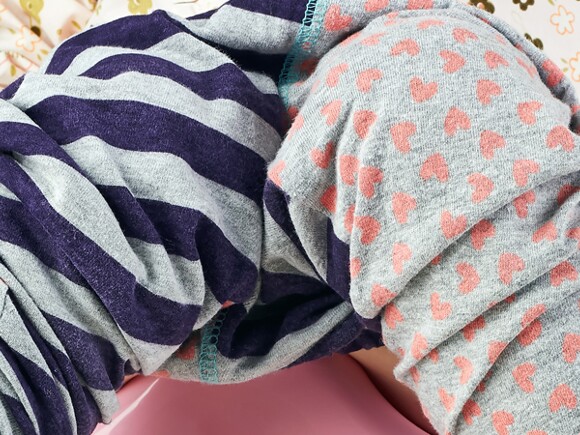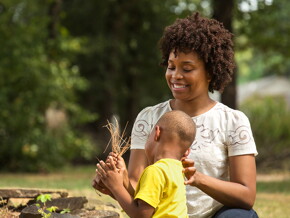
How to Toilet Train a Toddler
Before starting to toilet train your little one, assess their readiness. Assessing this is probably the easiest part of the whole toilet training process. However, once the process begins you may face a few challenges along the way. Staying calm and positive, as well as following some simple tips, will hopefully make the whole process a little easier.
The Basic of Toilet Training
When is the right time?
Around 18 and 36 months of age, your toddler may begin to show some interest in toilet training and exert some signs they are ready to start toilet training. Some signs that your little one is ready to commence toilet training may include:
- Your child stays dry at least two hours at a time during the day or is dry after naps;
- Bowel movements become regular and predictable;
- Facial expressions, posture, or words reveal that your child is about to urinate or have a bowel movement;
- Your child can follow simple instructions;
- Your child can walk to and from the bathroom and help undress themself;
- Your child seems uncomfortable with soiled diapers and wants to be changed;
- Your child asks to use the toilet or a potty chair;
- Your child asks to wear grown-up underwear.
If your toddler is showing signs of readiness, they will pick up the skill much quicker. By around age 3 or 4, most children can control their bowel movements and daytime urination.
Plan It Out
When your toddler is showing signs they are ready to toilet train, before you start you may want to plan a few things first:
- Decide whether you are going to use a potty or a toilet. This will be an individual choice and may even depend on what your toddler wants to do. Involving them in as many decisions as possible is going to help them participate more readily.
- You may also want to choose the language you’re going to use. For example, poo, wee, pee etc.
- You may also want to decide whether you’re going to use training nappies or pants or go straight to underpants. Either way, be prepared and have some ready to go.
- Decide whether you’re going to use a rewards or recognition system – books, stickers, surprises. Have them ready to go.
Children do master this skill — but at their own pace
Be positive and encouraging
When you’re starting to toilet train, be positive and encouraging. Always praise successes.
Keep these steps in mind:
- Help your child sit on the potty or toilet without a nappy so they get used to sitting on it.
- Take your child to the potty or toilet when you feel enough time has passed that they probably should have to go, or if you recognise the signs that they need to go. Let them sit on the potty for several minutes. If they don’t go, try again later.
- Take them to the potty regularly throughout the day. You might even try taking them every hour. Offer them a book to make it less of a task and more interesting. Boys will sit while they learn to use the toilet—standing may come later.
- Once your child goes, be sure to teach the whole toilet routine, from wiping to flushing to hand-washing.
Make the switch
When you think your child has the hang of it, gradually switch from nappies to training pants or regular ‘grown-up’ underpants. A great tip is to allow your child to choose their underwear or find ones with recognisable cartoons or action figure designs. Dress your toddler in clothes that are easy to pull down such as pants with an elastic waist. To begin with you may want to continue nappies during sleep times.
Be patient
Remember, accidents are bound to happen. Reassure your child when this happens and show lots of excitement when there’s success. For some toddlers a tangible reward, such as stickers, is a big motivator.
As eager as you are to complete the training, you can’t rush it. It is a learning process. Children do master this skill — but at their own pace.
At night
Staying dry all night may take more time. Removing night nappies may or may not happen at the same time as removing the day nappies. Leave your child in nappies until they are ready. Suggestions include:
- If your child wakes up every morning with a wet nappy, they’re not ready. If you take them out of night-time nappies, they will wet the bed.
- Keep your child in night-time nappies until most nappies are dry in the morning or until they are wet just before your child wakes. The nappy will be soaked and the urine warm.
- Your child may attempt to go to the toilet during the night or call out for your help.
If you have any concerns that your child is not developing the skills to toilet train, discuss these concerns with your doctor or child health nurse.
Top 10 Tips for Toilet Training
1. Introduce toileting as a fun thing.
First of all, introduce the very idea of getting potty/toilet trained as a fun activity for your toddler. Introduce it as a happy change from getting cleaned on the change table to getting cleaned after the potty.
2. Familiarise your toddler with the place.
You can do so by familiarising them with the toilet as a place that is used by you as well as the other members of the family. Let them know and understand that this activity is part of the family’s daily life and needs to be incorporated in their schedule as well.
3. Do not show any aversion.
The sight or smell of your baby’s potty may be a little uncomfortable for you but I’m sure you’ve had plenty of desensitizing through all the nappies you’ve had to change up until now. If you show this aversion however, it may convey negative vibes to your toddler. They may not want to upset you and as a result the whole process of potty training can become slightly difficult.
4. Set up a toilet routine.
Set a routine for toileting as soon as your toddler accepts to sit on the toilet for their bowel and bladder movements. You can take them to the toilet as soon as they get up in the morning. You can do the same before their bath and before bedtime.
5. Avoiding wet beds.
If you are prepared to take off your toddlers night time nappy, be prepared for wet beds. While it’s difficult to avoid perhaps in the beginning, to help prevent bed-wetting you may want to take them to the toilet once in the night.
6. Take books or toys into the toilet.
One smart idea to toilet train your toddler is to get some interesting picture books for them and stack them next to the toilet seat in the toilet. Make these books accessible to them whenever they are on the toilet.
7. Rewards and surprises.
Rewards can encourage your toddler to get toilet trained. For instance, you can start with simple rewards like star stickers on the board for every successful attempt. Praise your toddler whenever the task of toileting is accomplished. Talk to others in the family about the toddler’s success in their presence. This really encourages them to be better at it. Appreciate your toddler whenever they succeed at toileting. For instance, you can clap for your toddler’s performance, sing to them and even ask the others to do the same.
8. Let your toddler take charge.
Allow your toddler to use the toilet whenever they want to and for as long as they want. Let them watch you using the toilet. They may also gradually understand that mum not only takes them to the toilet, but also uses it for herself.
9. Use the right clothes.
While you are potty training your toddler, try to make your toddler wear clothes that can be easily and quickly opened or pulled down whenever it is needed.
10. Don’t start too early.
It’s important to wait until your toddler shows signs of being ready to toilet train. Toilet training involves physical, cognitive and behavioural skills. Not only does your toddler need to understand the process and want to learn, but their body also has to be at a stage where their bowel muscles are strong enough to be controlled. Starting too early may mean more accidents which can make it more difficult to show patience and understanding. This in turn can make toilet training a negative experience and potentially sabotage the process instead of supporting it.




















